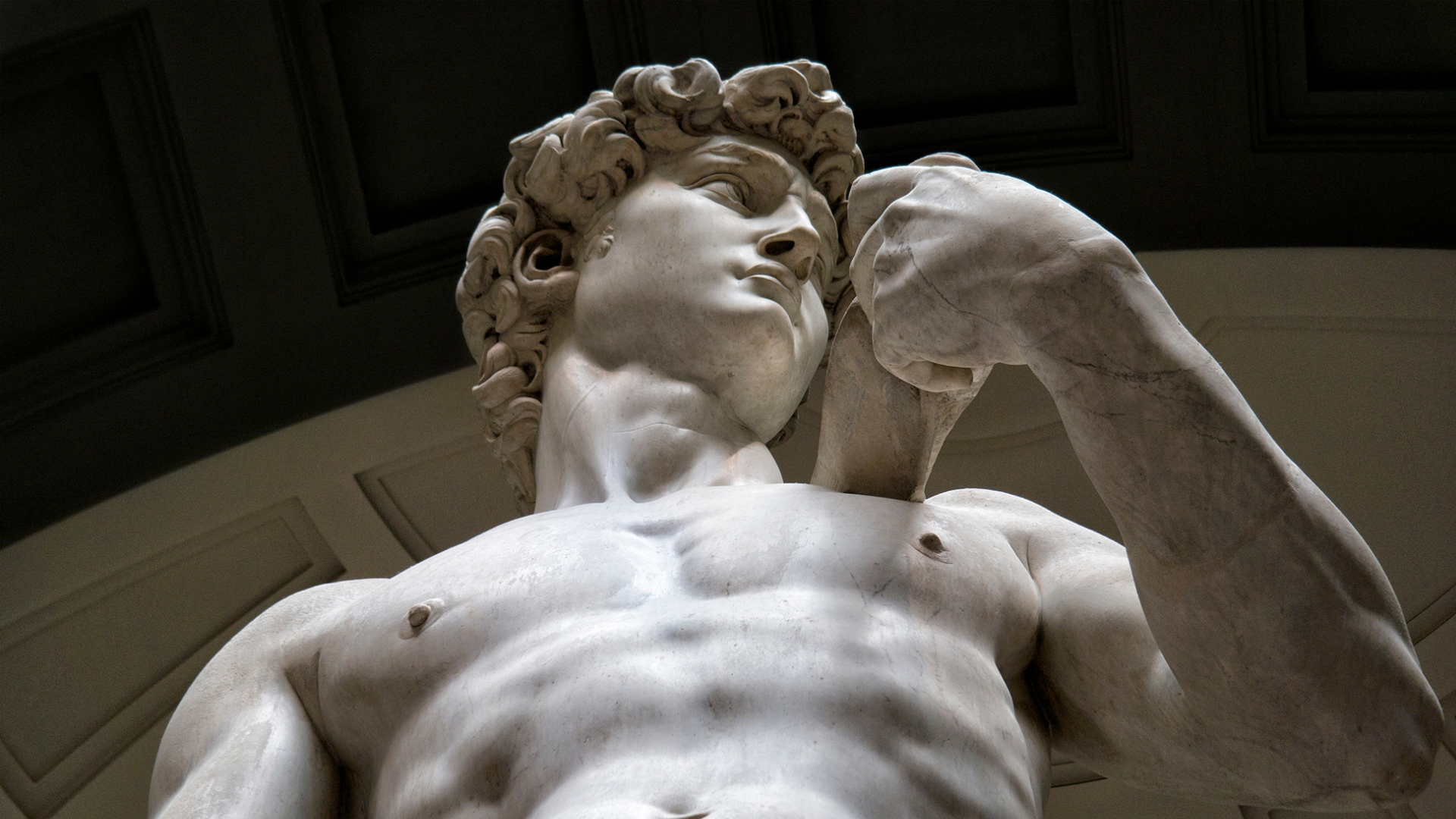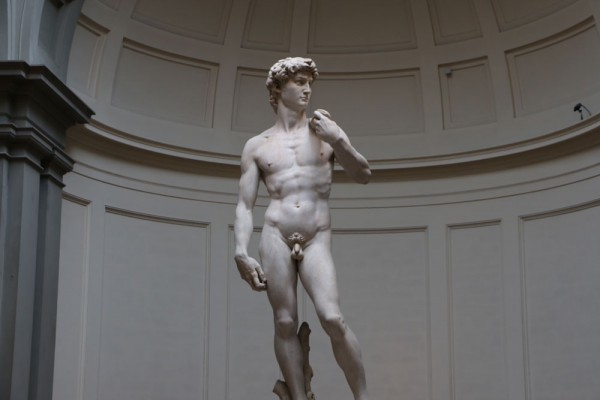Michelangelo’s David Unveiled

Michelangelo’s 17-foot marble David, poised in contrapposto, with sling over his shoulder.
What Happened?
Commissioned by the Opera del Duomo in 1501 for the Florence Cathedral, David was carved from a tall, weathered block that two earlier sculptors had abandoned. Michelangelo, just 26, spent roughly three years revealing the figure within.
A committee that included Leonardo da Vinci and Sandro Botticelli voted to place David in the political heart of the city rather than on the cathedral—both to preserve the work and to amplify its civic message. Forty men took four days to haul the statue a half-mile to the Piazza della Signoria.
Unlike earlier Davids showing the triumph with Goliath’s head, Michelangelo captures the charged instant before combat: the sling draped over the left shoulder, the right hand gripping a stone, the brow furrowed. The contrapposto stance and idealized anatomy channel classical models while staging Renaissance ideals of reason, courage, and human potential.
Because the figure was first intended for a rooftop niche, Michelangelo exaggerated certain proportions—especially the hands, arms, and head—so the sculpture would read powerfully when viewed from below. The outsized right hand likely nods to the biblical epithet manu fortis (“strong hand”).
From the start, David embodied Florence’s republican identity: a vigilant small state facing larger powers. The figure’s gaze once angled toward Rome—an artistic warning to any would-be Goliath. Its fame sparked countless reproductions, including the cast sent to Queen Victoria that famously received a fig-leaf cover.
After centuries outdoors—with riots, weather, and even thrown stones taking a toll—David was moved indoors to the Galleria dell’Accademia in 1873. A replica now stands in the piazza; the original remains a touchstone of High Renaissance sculpture and a continuing focus of conservation.
Why It Matters
David is more than masterful marble. It is a political statement in human form: a republic’s confidence, a culture’s belief in reason and resolve, and an artist’s proof that flawed material—handled with vision—can become the very image of perfection.
?
Why did the committee choose the piazza over the cathedral rooftop, and how did that change the statue’s meaning?
How do Michelangelo’s proportional choices shape the way viewers read David from below?
In what ways does Michelangelo depart from earlier Davids by Donatello or Verrocchio?
How did David become a political emblem for the Florentine Republic?
What conservation challenges does the sculpture face today, and how are they addressed?
Dig Deeper
A clear overview of David’s shifting roles—from religious symbol to civic emblem to global art icon.
Context, craft, and politics behind the world’s most famous statue—and why it still captivates.
Related

Montgomery Bus Boycott, Greensboro Sit-In, and the Rise of MLK
From Montgomery’s buses to Greensboro’s lunch counters, ordinary citizens ignited extraordinary change — and a new national leader emerged.

Trickle-Down Economics
For decades, politicians have promised that cutting taxes for the rich would benefit everyone. But does the wealth really 'trickle down'—or does it just stay at the top? A deep dive into the history, evidence, and impact of trickle-down economics.

The First Great Awakening: Faith, Fire, and a New American Identity
Long before the Revolution, a different kind of rebellion was stirring, one in the soul. The First Great Awakening reshaped American religion and helped plant the seeds of self-government and democratic identity.
Further Reading
Stay curious!
